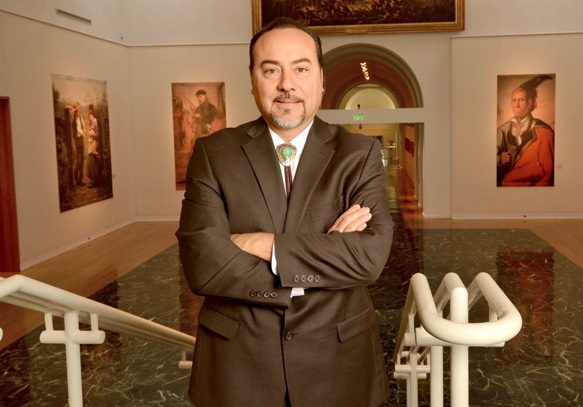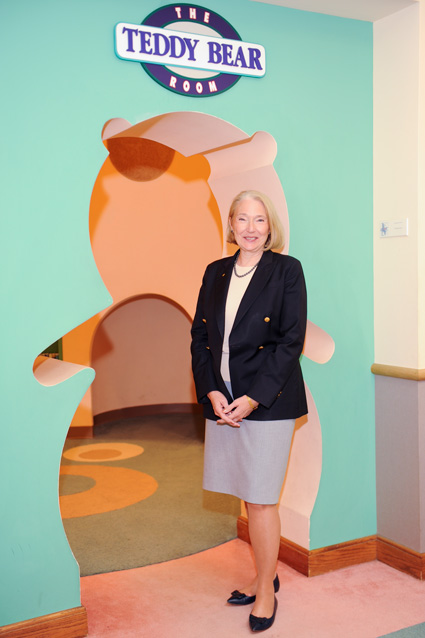
James Pepper Henry, the new executive director of the Gilcrease Museum, has an impressive work history, as associate director for the Smithsonian’s National Museum of the American Indian, director of Phoenix’s Heard Museum and of the Anchorage Museum at Rasmuson Center, but as he says, “I’m an Okie at heart.
“I’ve been back and forth to Oklahoma my entire life,” Pepper Henry continues. “My family roots are there.”
Pepper Henry, of Muscogee Creek and Kaw descent, has many relatives in the state, including in Tulsa, where he is excited to now be working.[pullquote]My number one goal is to elevate the profile of the museum and work on the relevancy of the museum in Tulsa and Oklahoma.”[/pullquote]
While Pepper Henry was born in Oregon, his grandparents were both from Oklahoma, his grandmother from Broken Arrow and his grandfather from Washunga. They met while working at Haskell Indian College in Kansas, and then they were transferred to Oregon.
Pepper Henry, who led the Heard Museum with programs that increased the museum attendance by 58 percent and memberships by 150 percent, is energized about his move to Tulsa to work that same magic for the Gilcrease.
“What I like about the Gilcrease is that it’s not a one-trick pony museum. It has history, art, anthropology, all of these things – important papers, archives of Civil War documents, Western art, South American, Native American art. There’s so much that the Gilcrease offers. How could anybody get bored there?”
Though he is an artist, a sculptor who studied art in college, Pepper Henry’s life work has focused on museums.
“I’ve always been a creative person, always making art. I got into museum work to subsidize my art. At some point, because I kept showing up at work on time, I got promoted. It was a career I wasn’t expecting, but I have no regrets. I wouldn’t change a thing. When I haven’t been able to work on my art, I have been able to help other people with theirs,” he says.
The challenges that Gilcrease face are ones that all museums do.
“It’s relevancy with the newer generations, the XYZ people,” Pepper Henry says. “There’s so much competition for their attention, and museums have to revitalize themselves to stay relevant.
“My number one goal is to elevate the profile of the museum and work on the relevancy of the museum in Tulsa and Oklahoma,” he continues. “And then my second goal is to work on its relevancy with the rest of the world.
“In my opinion, it’s an American treasure, a jewel, but a lot of people still don’t know about it. It’s tucked away in a neighborhood where a lot of people don’t travel.”

























